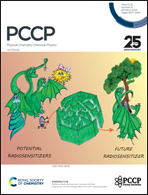Mechanical properties of amorphous CO2 hydrates: insights from molecular simulations†
Abstract
Understanding physicochemical properties of amorphous gas hydrate systems is of great significance to reveal structural stabilities of polycrystalline gas hydrate systems. Furthermore, amorphous gas hydrates can occur ordinarily in the nucleation events of gas hydrate systems. Herein, the mechanical properties of amorphous carbon dioxide hydrates are examined by means of all-atom classical molecular dynamic simulations. Our molecular simulation results reveal that mechanical strengths of amorphous carbon dioxide hydrates are evidently governed by temperatures, confining pressures, and ratios of water to carbon dioxide molecules. Notably, under compressive loads, amorphous carbon dioxide hydrates firstly exhibit monotonic strain hardening, followed by an interesting distinct phenomenon characterized by a steady flow stress at further large deformation strains. Furthermore, structural evolutions of amorphous carbon dioxide hydrates are analyzed on the basis of the N–Hbond DOP order parameter. These important findings can not only contribute to our understanding of the structural stabilities of amorphous gas hydrate systems, but also help to develop fundamental understandings about grain boundaries of gas hydrate systems.



 Please wait while we load your content...
Please wait while we load your content...